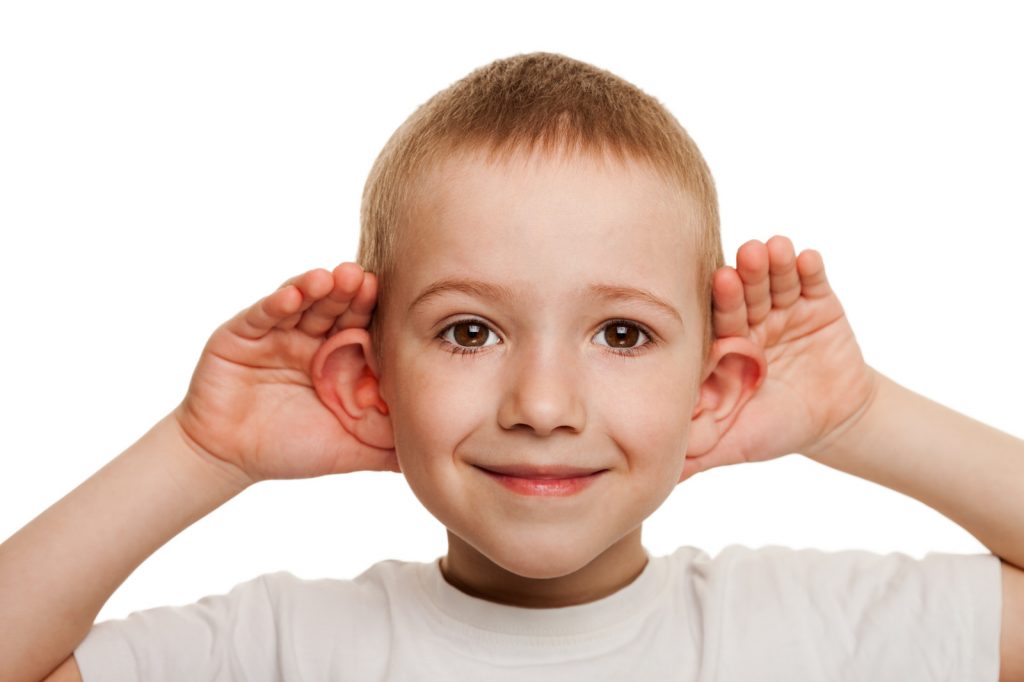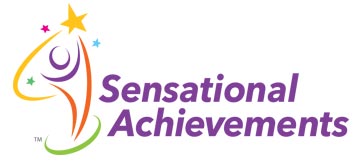
Listening with your whole body is a concept used in schools to teach what “active listening” looks like for students by demonstrating an attentive listening posture. It assumes that a child’s body is working well for them but they just need more support to follow the listening rules and routines of the classroom. But we may be jumping too far ahead with the social expectation of “active listening” before supporting the foundational auditory skills of listening. So what are some of those skills and what happens if they aren’t well developed?
Sound Localization: The ability to orient to and visually locate where a sound is coming from in the environment. This relies on adequate spatial awareness and visual skills to turn and look when you hear a sound. If you can’t do this, how will you be able to turn your attention to the teacher or peer in the classroom that is speaking? Sound becomes something that is around you but is not connected to any particular thing/person – This can make it difficult to choose which sounds to pay attention to and increase distractibility. Students are often labeled inattentive/spacey, appearing either disconnected from or overwhelmed by the classroom environment.
Auditory Filtering: The ability to filter out background/extraneous sounds in order to direct your attention to important auditory information. This is what allows people to be able to attend to a conversation with a friend while sitting in a noisy auditorium waiting for an event to begin. If you can’t filter out extraneous noises (ex: the hum of a computer, whispering of peers in the classroom, the sound of a stapler or papers rustling), than the ability to attend to the details of directions from the teacher and stay focused on academic work may be compromised.
Sound Discrimination: The components to sound are frequency/pitch, speed/tempo/tone, and volume/intensity. It’s important to be able to distinguish between these three elements of sound in the classroom in order to tolerate and process differing sound patterns without losing focus or attention. Being able to discriminate the details of sound lays the foundation for understanding verbal information, such as following group conversations and directions from the teacher. It also supports development of expressive language since the voice can only reproduce what the ear can hear. If sound is not being processed efficiently, then the ability to use your voice to express yourself will likely also be impacted.
What happens if these skills aren’t well-developed?
If the auditory environment is confusing and overwhelming for a child, it can trigger fight/flight reactions for survival and self-preservation. When poor listening skills are coupled with anxiety, a child may appear so overwhelmed by background sounds, not knowing where a sound is coming from, or not knowing what a sound is that the child can think of nothing else until he/she are able to identify where a sound is coming from and what it means. Some children will revert to talking in a loud voice, excessive question asking, and controlling conversations to make sure that they maintain control of their auditory environment. Still others will just appear to “tune out” altogether and need frequent reminders to initiate and sustain attention to tasks throughout the school day.
What can be done to help these skills improve?
The Tomatis Method is considered the “cadillac” of all listening programs. It was developed by Dr. Alfred Tomatis, an Ear Nose and Throat doctor, to help opera singers improve their vocal range in early 1950’s. As they began reporting more significant changes to their self-regulation, motor coordination, language/communication, and self-expression, Tomatis began exploring the larger implications of this program. The Tomatis Corporation continues to operate on the cutting edge of development with regard to its technology and research to maintain it’s position at the top of its class. Other Tomatis-based Listening Programs have been developed since with variations in parameters, technology, and implementation, all with their a unique value and program structure. The best listening program is always the one that a family will be able to commit to and follow through with to get the most benefit. However, given the power that Listening Programs have to impact the nervous system to promote lasting changes, they must be overseen by a provider certified in that program so that the programs can be updated and supports provided as needed to optimize the benefits of implementation.
Children with learning disabilities, autism, sensory processing disorders, and attentional issues have all benefited from using auditory interventions to enhance their ability to become more active participants in the learning process. Coupled with sensory integrative occupational therapy intervention, the benefits with regard to motor skills, reading, attention, and independent task completion can be even greater.
To learn more about the Tomatis Method and Tomatis-based listening programs, join Aubrey Schmalle, OTR/L, SIPT on April 27, 2017 at 1011 High Ridge Road, Suite 300, Stamford, CT 06906 from 7pm to 9pm. Attendees will get to sample the listening programs and hear the differences for themselves.
Not able to attend in person?
Click this link: http://ow.ly/ps8S30bcV4q to get access to the recorded version once it becomes available
Disclaimer: These programs are designed as educational interventions and are not considered medical devices meant to treat diagnosed deficits. They should be used only under the direction of a certified provider.








